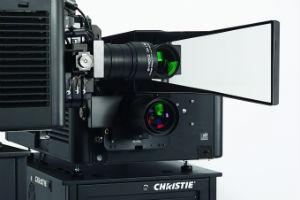 The reduction in the collection of 3D cinema is a growing problem in the film industry. What was announced as an innovative and powerful platform for immersive and fascinating 3D content has failed to capture the interest of viewers.
The reduction in the collection of 3D cinema is a growing problem in the film industry. What was announced as an innovative and powerful platform for immersive and fascinating 3D content has failed to capture the interest of viewers.
By Bruno Tavares*
One of the perspectives of the problem of 3D cinema is based on content, in the sense that producers produce 3D films that were never intended for 3D, or worse, simply do a bad job with respect to 3D production in general.
On this point, the CEO of Dreamworks Animation, Jeffrey Katzenberg, publicly denounced in an interview with Variety in 2010 producers and studios who "had killed the goose that laid the golden eggs" by mass producing "appalling" 3D films1. A clear and unfortunate evidence of his vision is that since then the collection of 3D films (versus 2D films) in the US market fell from 67 percent in 2009 to 42 percent in 2013.
This is a serious problem, mainly because the overpricing of 3D input, from which the entire industry – from studios to exhibitors – benefits is also experiencing a drastic reduction.
However, to expect Hollywood studios to take full blame would be unfair – technology providers, system integrators and exhibitors must also take their share of responsibility and understand the potential impact that technology decisions have on creating and delivering the overall 3D experience.
What goes wrong in the 3D experience?
3D cinema is made possible by the mass use of digital cinema projectors. For screen scanning, installers generally design projection systems that reach a screen brightness level of 14 fL, in accordance with Digital Cinema Initiatives (DCI) specifications. However, equipment is normally designed assuming that all films are screened in 2D. This leads to a bigger problem, given that 3D equipment (various polarizers, wheels, lenses, etc.) effectively absorbs between 70 and 90 percent of light, leaving only a small fraction of brightness of 14 fL.
This means that the audience barely appreciates the details that make up the image; everything fades into the background and the colors become unnatural. The closest thing to watching a movie with a low level of brightness would be to read in very low light, accompanied by headache and tired eyesight.
To make matters worse, most 3D systems need a large, high-gain screen, with a higher brightness point in front of the viewer but with a level of brightness that deteriorates in those areas of the screen more remote. This is quite far from a natural and immersive experience. Until display manufacturers develop uniform surfaces that can retain light polarization, the only way to achieve natural, immersive 3D experiences is to use low-gain white screens.
Stereopsis
We must also consider stereopsis. Stereopsis is the visual process that allows two eyes to see two slightly different images of each other. The human brain makes use of these two images, as well as other fundamental aspects, such as relative size and surface orientation, to form a single mental image, which it completes with an accurate perception of depth.
These two images are usually viewed simultaneously. However, with rare exceptions, 3D films are shown by projecting images sequentially through flashes to either eye (right and left) by means of a single projection lens.
This means that the brain receives the images of the right eye and the left eye at different times, and also has to carry out the correction task for temporary compensation. It is an unnatural function that, although not consciously perceptible by most viewers, increases their level of fatigue or leads to headaches and, in some cases, even causes nausea or dizziness while viewing 3D content. The ideal would be to project images simultaneously and persistently to both eyes, rather than project a rapid succession of flashes between them.
A technical solution
It is well known that a laser projection system, along with the proper selection of efficient 3D equipment, could fix 3D brightness problems on most displays. Christie's® 2013 public demonstration with laser projection showed that a single 72,000 lumens projector achieved a brightness of 14 fL on a large, high-gain 65-foot screen, using a RealD XL 3D system. It was a benchmark for the sector, as the audience was finally able to watch a 3D movie with the right level of brightness.
However, the system was still projecting images through flashes to the left and right eye, and approaching maximum brightness capacity, so it would not have been possible to illuminate a larger screen. A relatively easy solution is to add a second projector to the system. This would double the light output points, while naturally delivering simultaneous images to both eyes. Modern computer technology based on aligned vision, such as that used in the Christie Duo system, can eliminate the task of keeping dual projection systems perfectly aligned for film projection purposes.
Christie's laser demonstration was affected by the fact that the 3D system in use needed a large, non-uniform, high-gain display to maintain light polarization. Currently, there are only two 3D alternatives using low-gain white screens. One system uses shutter lenses, projecting images through flashes to the right and left eye from a single projector, alternately blocking each eye so that it only sees the image that corresponds to it.
This approach, however, is very inefficient from the perspective of brightness, and is not ideal due to the implications derived from stereopsis, although there are those who could consider that the overall experience improves due to the uniformity of the image that is achieved.
The other solution available for low-gain white screens uses a technique known as 3D based on color separation. This approach takes advantage of the fact that images that are projected onto the screen are created using a pixel-by-pixel combination of the primary colors red, green, and blue (RGB).
Specifically designed glasses can filter out specific color wavelengths of light to enter each particular eye. By generating images for one eye from the combination of primary RGB colors (R1G1B1) while generating images for the other eye using a different combination of RGB primary colors (R2G2B2), glasses-filters can be used to ensure that each eye only sees the correct image.
This approach is used by Dolby Labs' 3D system, and is widely recognized as the best 3D platform for accurate color reproduction and a naturally immersive 3D experience, especially if two projection heads are used to simultaneously image images in both eyes.
The Dolby 3D system has been available on the market for some years, however, the biggest drawback of lamp-based systems is that the process of isolating two different sets of RGB primary colors from a broad-spectrum xenon (white) lamp is extremely inefficient, which also exacerbates the problem of low brightness in rooms with very large screens.
If this were the case, the high-brightness capability of laser projection should surely be combined with the superior image quality offered by 3D technology based on color separation. Unfortunately, the solution is not so simple. Common laser projection systems create light by combining a single set of RGB primary colors to create the image.
It is what is known as 3-Primary (3P) laser projection, and is the ideal solution for 2D film projection and for other industries. With 3P, however, there is simply no "light energy" at secondary wavelengths to get the second image from the light source for the other eye. To create the separate color image for the second eye, we would need to add three primary laser colors to the light source – creating what is aptly called a 6-Primary (6P) laser system.
6P laser projection
With a 6P laser projection system, the wavelengths of light that are needed are generated directly at the source, without any light being wasted, and at the same time the isolation of the specific colors for the separate images of the right and left eye is achieved.
The result is that a 6P dual-head 3D system is almost twice as light efficient as the most efficient 3D system available today – with the added benefit that it doesn't need a large, non-uniform, high-gain screen. Similarly, the implementation of a 6P laser system can be carried out easily using two projection heads in a Christie Duo configuration, designating each projection head as a projector for the right or left eye, connecting it separately to its own set of RGB primary color lasers.
When considering a 3D projection system with a double 6P head, it is reasonable to consider system architectures that use only one projection head, since the extra head adds to the system not only an overexpenditure but also complexity. However, if you consider what is achieved with the 6P laser, a double head system is the only option that makes sense.
The practical alternative to a high-power cinema system is the sequential projection of flashes with images for the left and right eye through a single projection head, which is clearly not ideal based on the above implications of stereopsis.
The important thing is that a single-head 6P system is less than half as light efficient as a dual-head system that simultaneously emits images to the left and right eye. To achieve sequential image projection, a single-head system is mechanically switched off or blocked by either primary R1G1B1 or primary R2G2B2 alternately.
This means that each set of lasers is used less than 50 percent of the time considering transient switching and color effects that need to be hidden in full darkness. Therefore, with a single-head 6P laser system, the user will need at least twice as many lasers to achieve the same 3D light result as a dual-head 6P laser system. Considering that the current cost of lasers far exceeds the cost of projection heads, this means that the cost of a single-head system will be almost double the cost of a double-head system to achieve the same level of 3D brightness.
The future of the film industry
As with any type of new technology, early adopters are expected to pay an extra cost, and may witness significant price drops in similar product offerings during the early years. For this reason, it is essential that buyers carefully analyze the options that are available and thus ensure that any product they buy today will be scalable and improvable, as is the case with the modular architecture of the laser projection system marketed by Christie.
6P laser projection is definitely the future of cinema and will one day become the main source of illumination for projection systems. Christie and other individuals in the industry have a strong conviction and expectation that laser projection will raise the bar for all 3D displays, meeting market needs and restoring the 3D film industry's revenue levels to reflect the impressive 3D experience that viewers could only enjoy in their movie theaters.
Why two heads are better than one
As an explicit caveat, an exhibitor should under no circumstances consider a 6P sequential system with a single head. This type of system not only exhibits "flickering" artifacts on the screen, but also makes extremely inefficient use of lasers for 3D based on color separation (compared to a double-head system) and has a lower than normal performance with respect to the rest of the configurations of 2D and 3D systems (compared to 3P systems).
The buyer could easily be deceived. For example, if a 6P laser projector is offered with 60,000 lumens of light output, it is very likely that such a specification is of a light output for only a 2D system; the actual 3D light output would be below 30,000 lumens after considering the alternating flicker or shutter of each set of primary laser colors.
Clearly, in this case, the technology would not be covering a market need for greater brightness in 3D nor would it be offering an adequate 2D solution, but only taking advantage of the current advertising of the 6P laser projection system.
*Bruno Tavares is christie's general manager in South America.












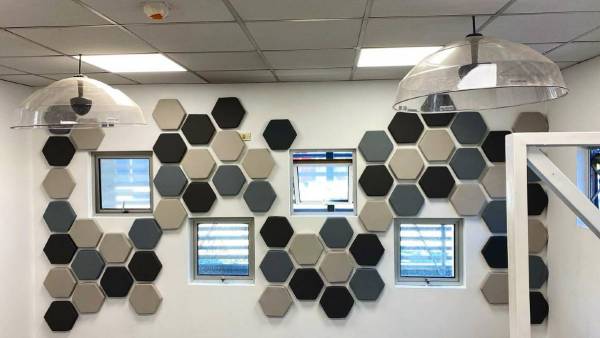
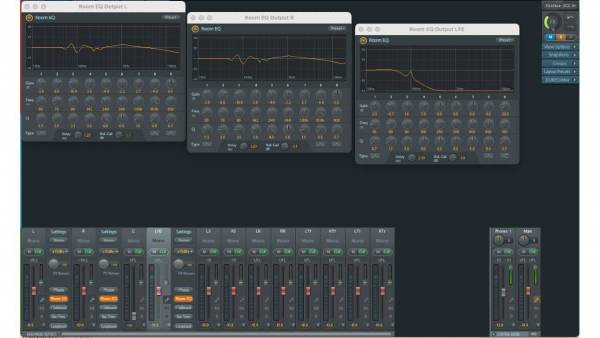

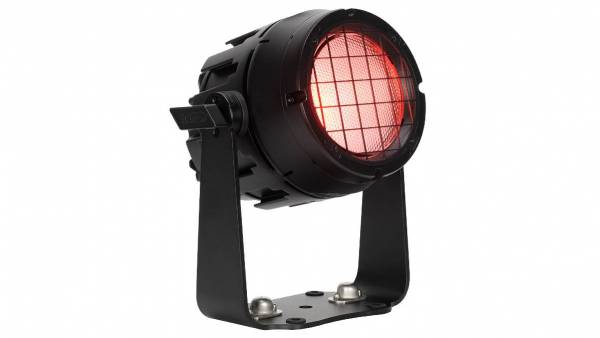

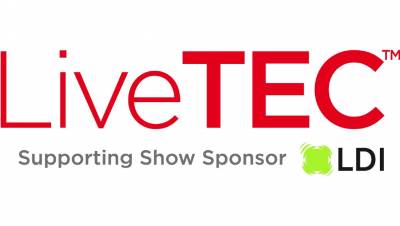








Leave your comment